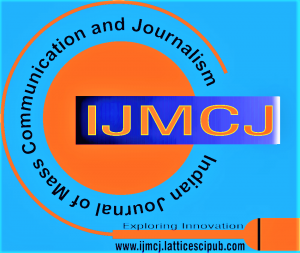Impact of Multilingual Communication and Educational Status of Gond Tribes with Special Reference to Narayanpur District of Bastar (C.G)
Ashutosh Mandavi
Dr. Ashutosh Mandavi, Asst. Prof., Kusha Bhau Thakare, University of Journalism and Mass Communication, Kathadih, Raipur (C.G), India.
Manuscript received on 20 September 2022 | Revised Manuscript received on 30 September 2022 | Manuscript Accepted on 15 December 2022 | Manuscript published on 30 December 2022 | PP: 1-3 | Volume-2 Issue-2, December 2022. | Retrieval Number: 100.1/ijmcj.B1022122222 | DOI:10.54105/ijmcj.B1022.122222
Open Access | Ethics and Policies | Cite | Mendeley | Indexing and Abstracting
© The Authors. Published by Lattice Science Publication (LSP). This is an open-access article under the CC-BY-NC-ND license (http://creativecommons.org/licenses/by-nc-nd/4.0/)
Abstract: In India, there are numerous different tribal groups, and Chhattisgarh is home to many of them. The oldest tribal populations in India are found in this state, and it is reasonable to conclude that the earliest tribal people first settled in Bastar around 10,000 years ago. In India, the term “tribal” is used to describe people who are classified as “indigenous” in other countries. The idea that teaching in the mother tongue is an efficient method of learning arises from the theoretical idea that a culture can only be expressed via the language that serves as an essential part of it. The people of Bastar used to speak Gondi, Halbi as their mother tongues. Gondi is a part of the Dravidian language family very close to Telgu. They use these two languages for intercommunication. Hindi, or Chhatisgarhi is also used by outsiders to communicate with them.
Keywords: Gond, Halba, Tribes
Scope of the Article: Communication Studies
